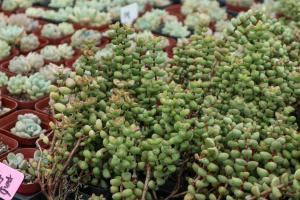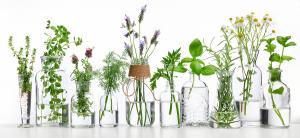How Deep Do You Plant Lily Bulbs in Pots?
Lilies are a popular and elegant flower that can be grown in pots. Many gardeners prefer to grow lilies in pots because it allows for easy placement and mobility. However, growing lilies in pots requires careful attention to detail, particularly when it comes to planting the bulbs. One of the most common questions gardeners ask is, "How deep do you plant lily bulbs in pots?"
Choosing the Right Container
Before planting lily bulbs in a pot, it's important to choose the right container. A pot that is too small will not provide enough space for the bulbs to grow, while a pot that is too large can lead to waterlogging and root rot. Typically, it's recommended to use a pot that is at least 12 inches deep and wide. Pots made of wood, clay, or plastic are all suitable for growing lilies, as long as they have drainage holes.
Preparing the Potting Soil
Lilies prefer well-draining soil that is slightly acidic. To prepare the potting soil, mix together equal parts peat moss, perlite or vermiculite, and coarse sand. This mixture will ensure that the soil is well-draining and aerated, which will promote healthy root growth. It's also a good idea to add a slow-release fertilizer to the potting soil to provide the bulbs with the nutrients they need to thrive.
Planting the Lily Bulbs
When planting lily bulbs in pots, it's important to plant them at the correct depth. In general, lily bulbs should be planted at a depth that is twice the height of the bulbs. This means that if a bulb is 2 inches tall, it should be planted 4 inches deep. However, it's important to note that different lily varieties may require slightly different planting depths. Check the packaging or consult with a gardening expert to determine the correct planting depth for your specific lily variety.
Caring for Potted Lilies
Once the lily bulbs have been planted in the pot, it's important to monitor their growth and provide the right care. Lilies require regular watering, but it's essential not to overwater them. Allow the soil to dry out slightly between watering sessions to prevent waterlogging and root rot. It's also important to fertilize the lilies every few weeks during the growing season to provide them with the nutrients they need to grow and produce beautiful flowers.
Harvesting Lilies
After several months of growth, the lily bulbs will begin to produce flowers. Depending on the variety, the flowers may be tall and stately or short and sweet. When the flowers have fully bloomed, they can be harvested and used to create beautiful floral arrangements or left on the plant to provide a colorful display. As the flowers begin to wilt and die back, it's important to deadhead them to promote new growth and ensure that the plant remains healthy.
In Conclusion
Planting lily bulbs in pots is a rewarding and enjoyable gardening activity that can produce stunning results. By choosing the right container, preparing the potting soil, and planting the bulbs at the correct depth, you can ensure that your lilies will grow and bloom beautifully. With proper care and attention, potted lilies can thrive for many years and provide a natural and colorful addition to your home or garden.

 how many times do yo...
how many times do yo... how many planted tre...
how many planted tre... how many pine trees ...
how many pine trees ... how many pecan trees...
how many pecan trees... how many plants comp...
how many plants comp... how many plants can ...
how many plants can ... how many plants and ...
how many plants and ... how many pepper plan...
how many pepper plan...
































